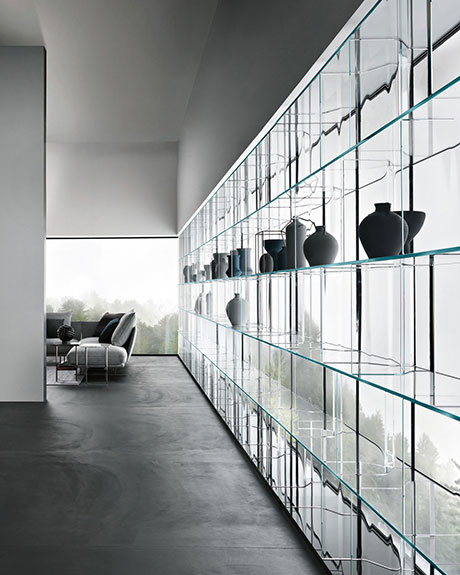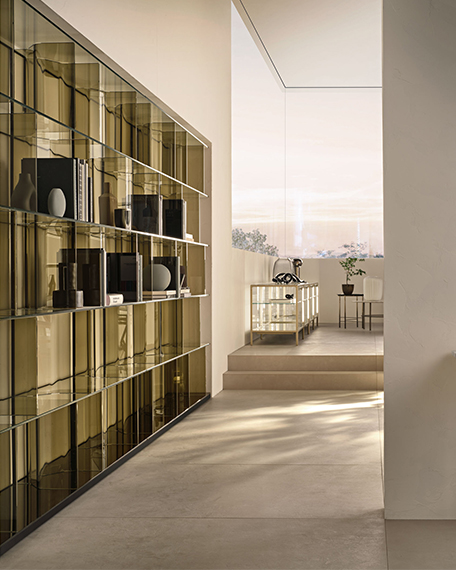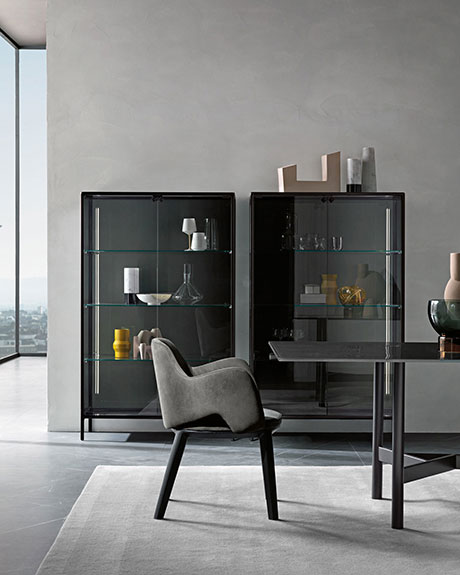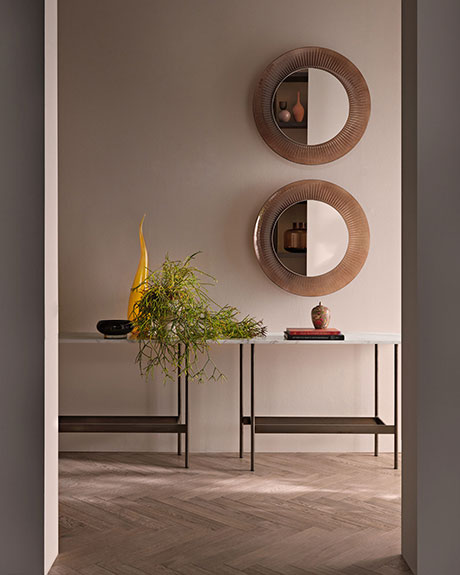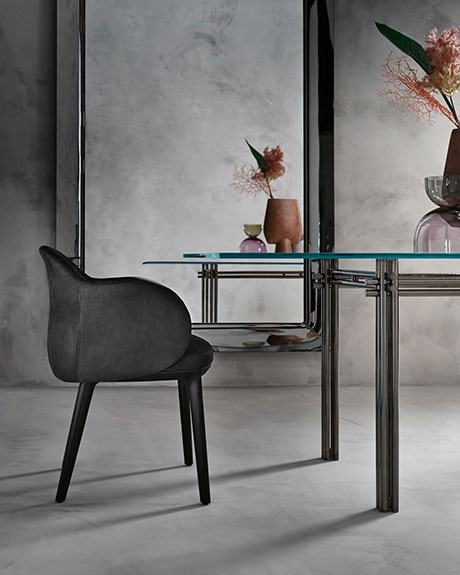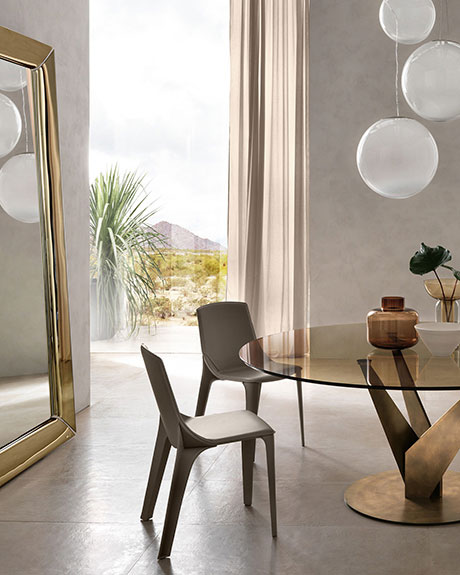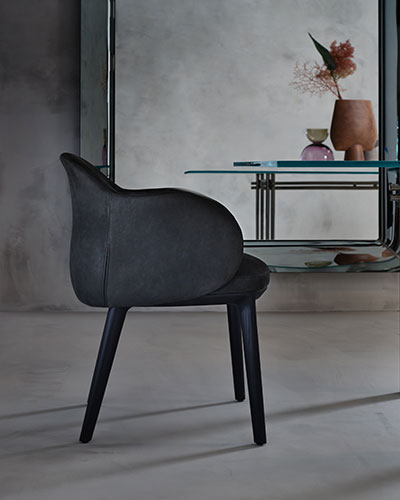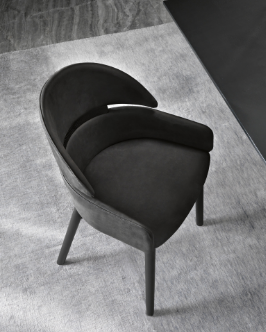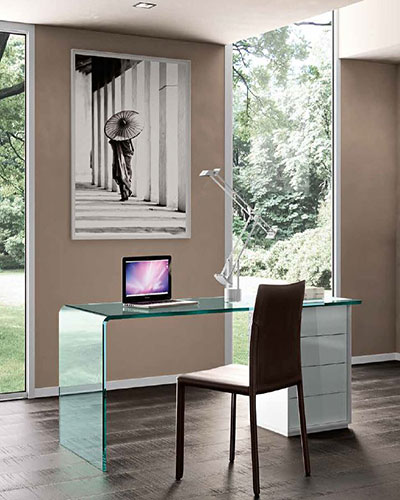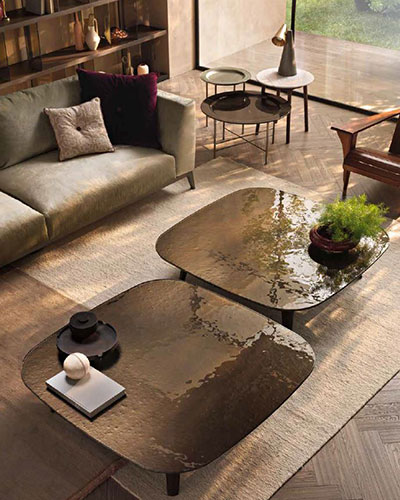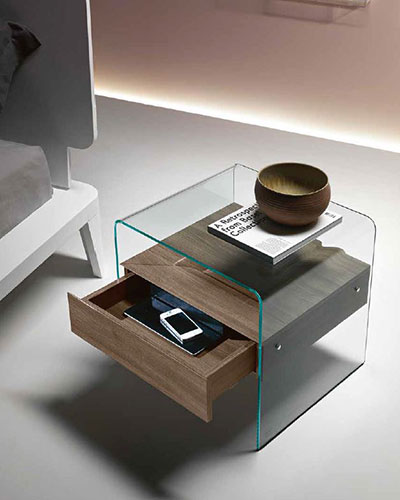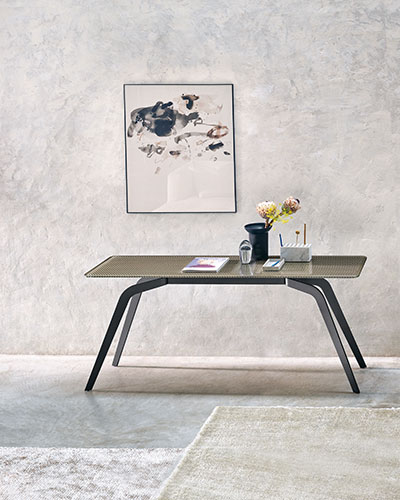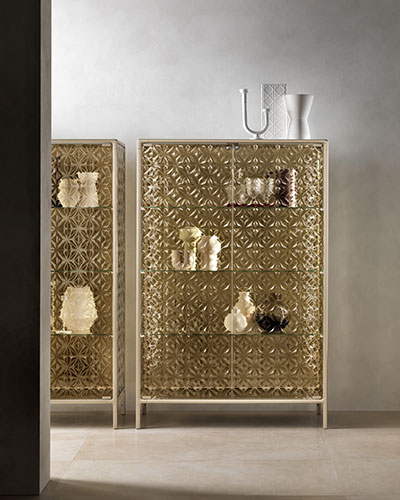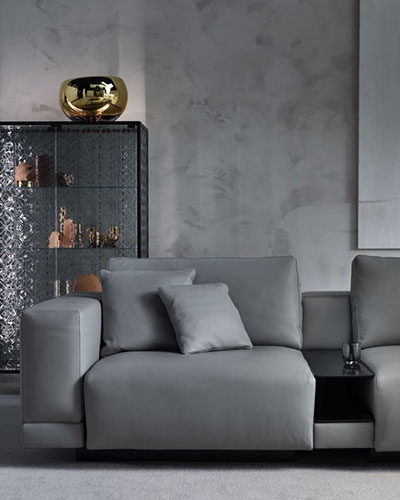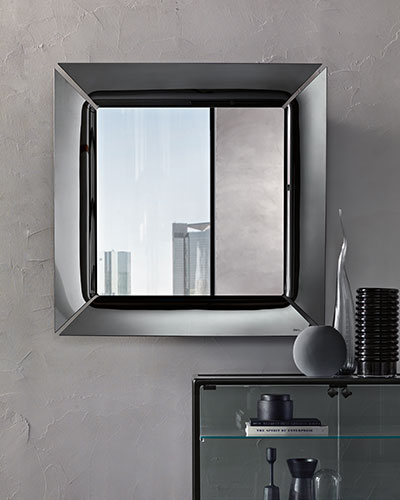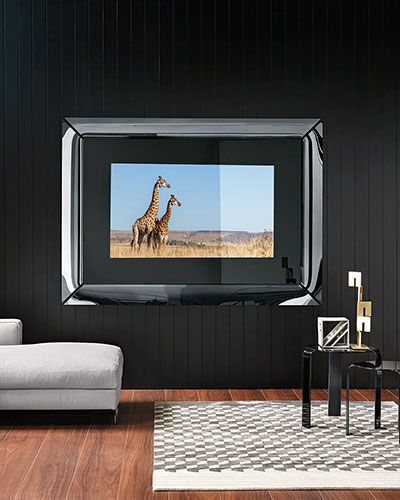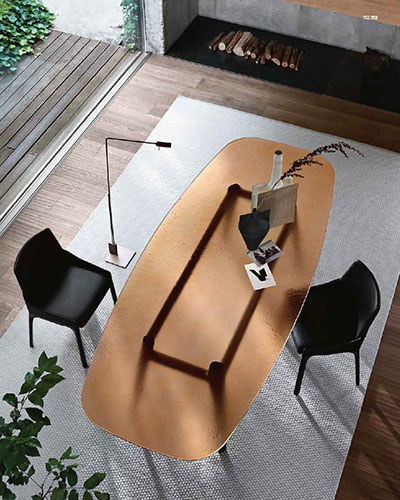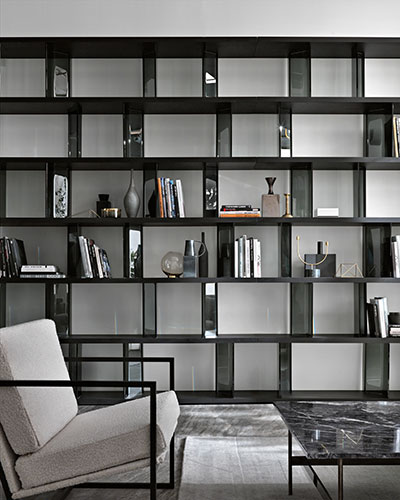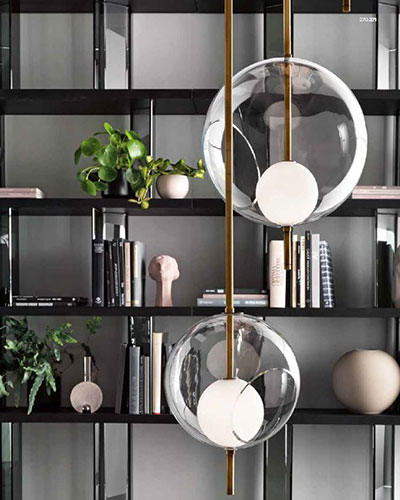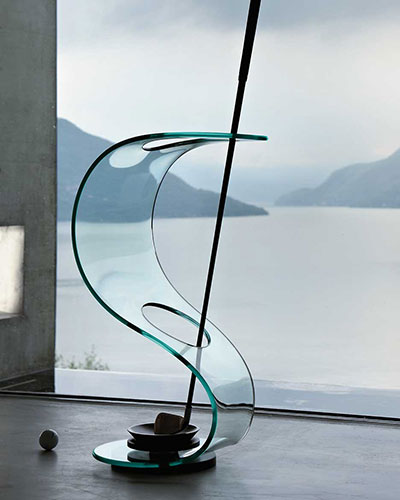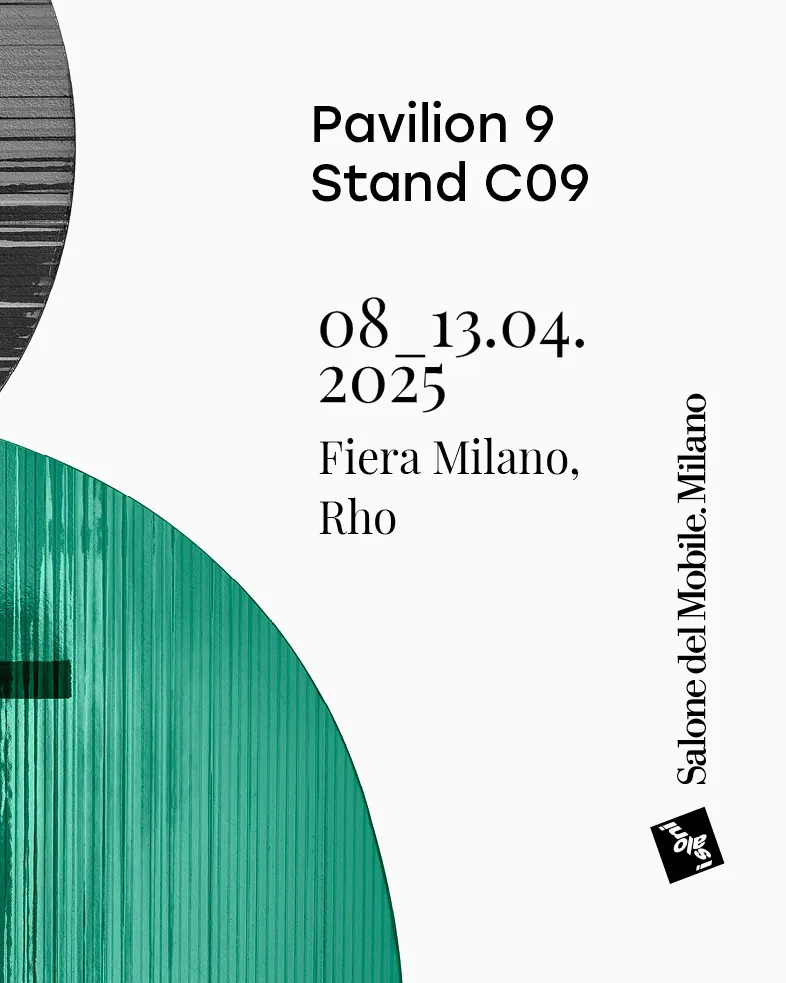The cupboard: when the container unit becomes protagonist
- 09/03/2023
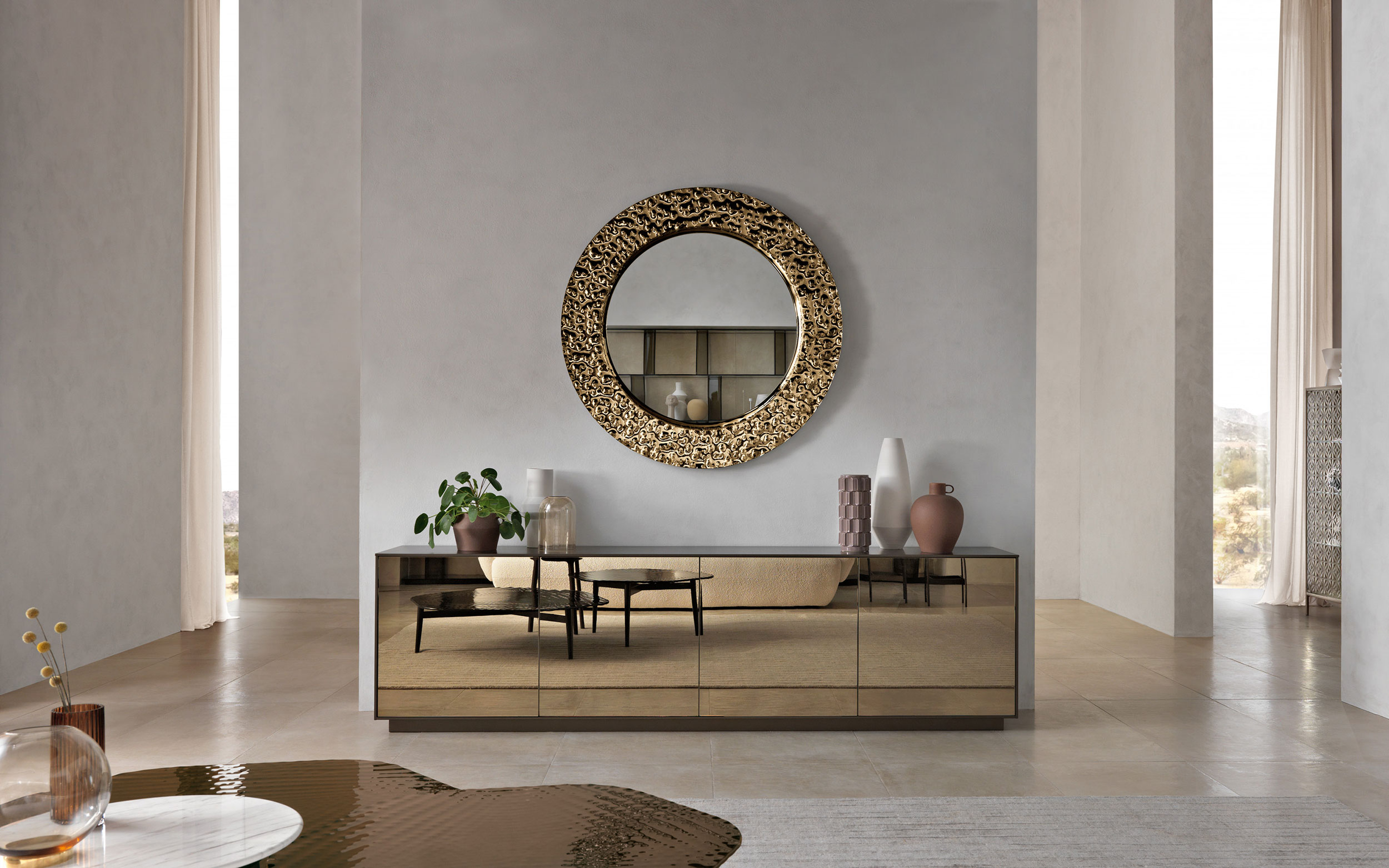
A piece of furniture that assumes value not only for its objective beauty, but also for its containing functions.
Valuable or everyday objects that do not need to be flaunted, require discreet carrying cases indeed. Container units tastefully cover and order miscellanies of utensils, goblets and other preciousnesses that we bring out when appropriate.
Each sideboard has its own way of being a “treasure chest,” its own strategy for discreetly containing and catching the eye while diverting the attention from its inner contents.
The Echo sideboard, for example, replicates the fine geometric pattern of the showcases collection, even if with an opaque fused glass, framed by a refined wooden frame. The backpainting confers the fused or smooth glass a metallic finish that refracts and mirrors the surrounding ambience. It never transpires nor alludes to the content, nothing except the refraction of external light is visible.
The geometric pattern of the fused doors, as well asthe perfect mirrored flatness of the smooth ones, draws the glance away and distracts it from the content that is kept inside.
Highly innovative working processes makes it possible to imprint complex and repeated decorations on the doors, transforming the surface and making them three-dimensional. A sideboard with an elegant, precious character that produces a strong sense of illusion through the use of unusual shapes.
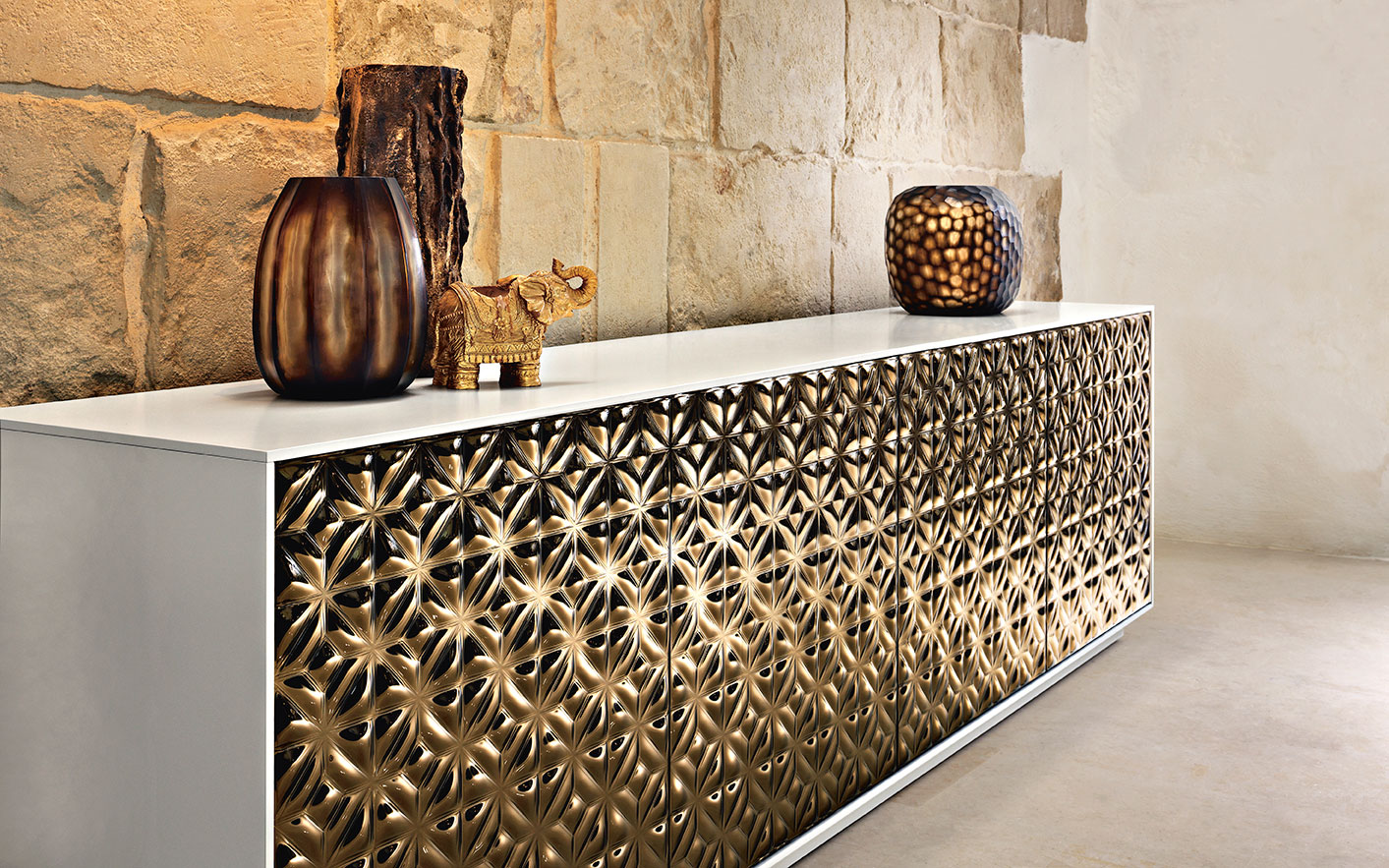
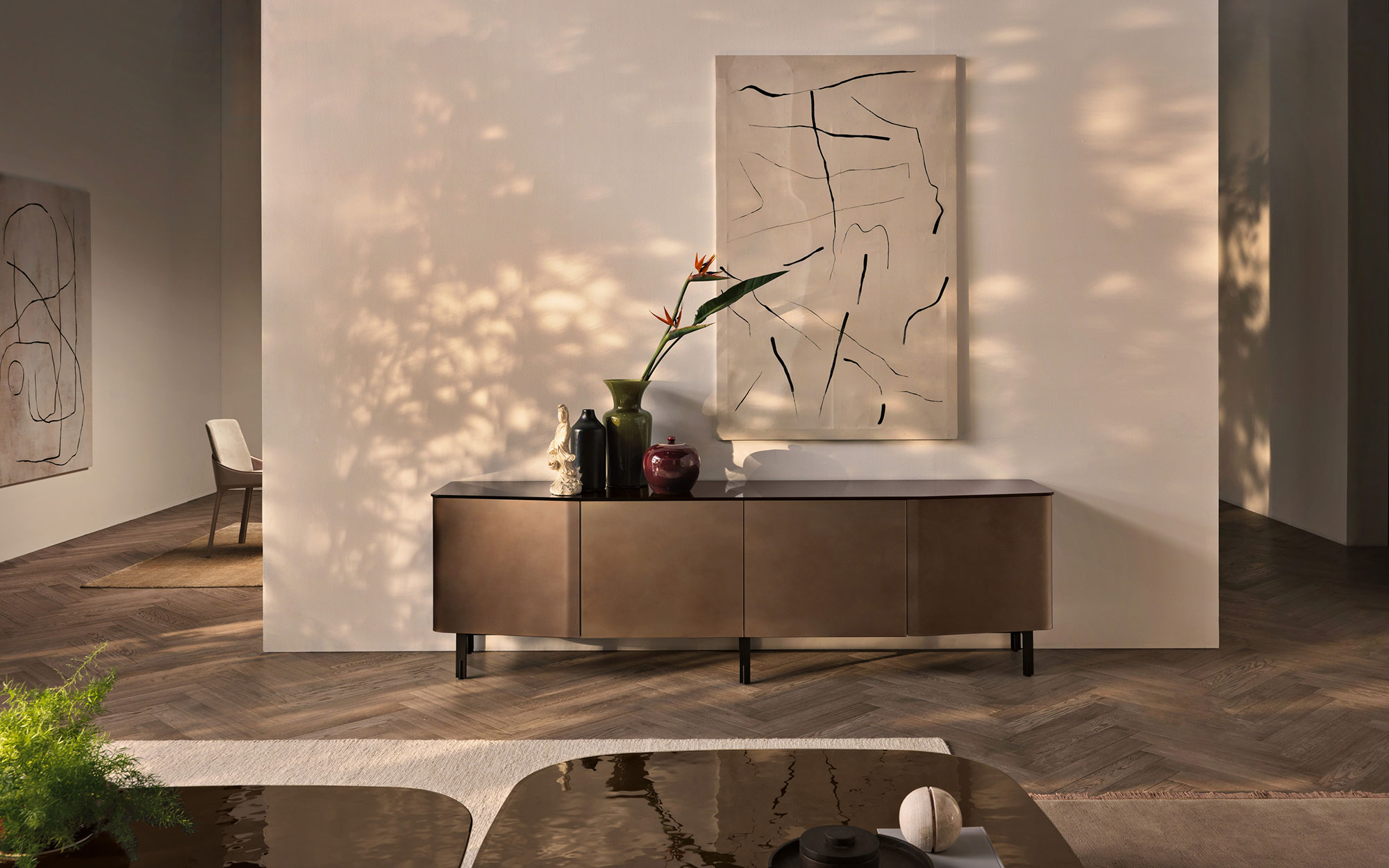
Plana holds the eye on the materiality of a door that – thanks to the acid-etching process – simulates different essences.
The curved glass of the Plana doors, which are also back-painted, varies from shades of cloudy brown, to burnished brass and glazed lead, matched with an extralight glass top back-lacquered in storm grey, olive grey, and grey brown finish.
Plana is a volume interwaving classical and modern lines at the same time, combining high-class reminiscences and declining glass in unexpected, surprising ways, almost turning it into leather, mortar, metals, or precious woods. And in doing this, Plana helps to distract the observer while well guarding the contents behind its doors.
Is not this the ultimate role of the sideboard?
The ancient container that housed and hid sourdough and baking tools behind the forms of the sideboard has always been a discreet custodian, revealing its contents and real function only in precise moments. The modern cupboard as well today guards without flaunting.
Moreover, it shifts the attention from the content to the container, which takes on eclectic, and fascinating, forms. And with the emotions it is able to stimulates, glass appeases all other curiosities: there is no more need to investigate what is behind the doors.
Plana holds the eye on the materiality of a door that – thanks to the acid-etching process – simulates different essences.
The curved glass of the Plana doors, which are also back-painted, varies from shades of cloudy brown, to burnished brass and glazed lead, matched with an extralight glass top back-lacquered in storm grey, olive grey, and grey brown finish.
Plana is a volume interwaving classical and modern lines at the same time, combining high-class reminiscences and declining glass in unexpected, surprising ways, almost turning it into leather, mortar, metals, or precious woods. And in doing this, Plana helps to distract the observer while well guarding the contents behind its doors.

Is not this the ultimate role of the sideboard?
The ancient container that housed and hid sourdough and baking tools behind the forms of the sideboard has always been a discreet custodian, revealing its contents and real function only in precise moments.
The modern cupboard as well today guards without flaunting. Moreover, it shifts the attention from the content to the container, which takes on eclectic, and fascinating, forms. And with the emotions it is able to stimulates, glass appeases all other curiosities: there is no more need to investigate what is behind the doors.

